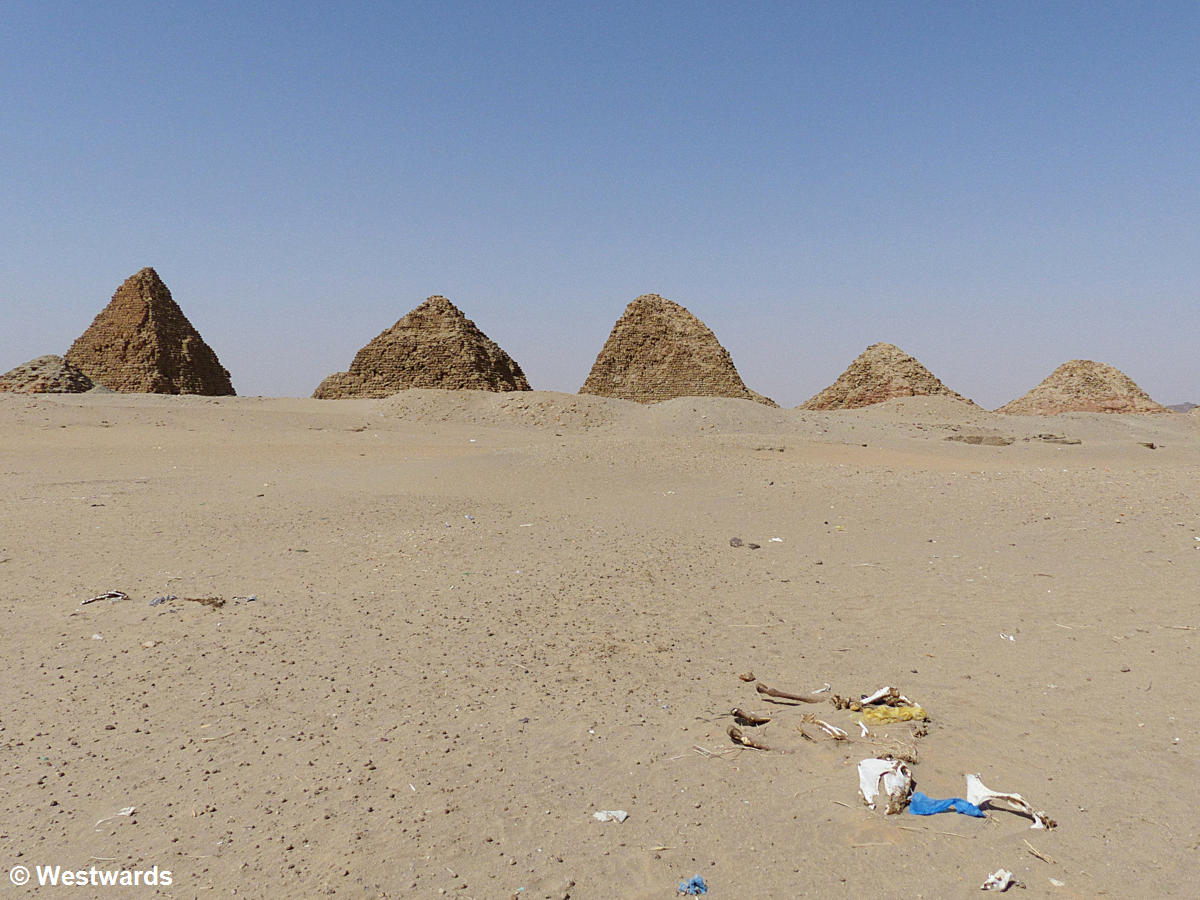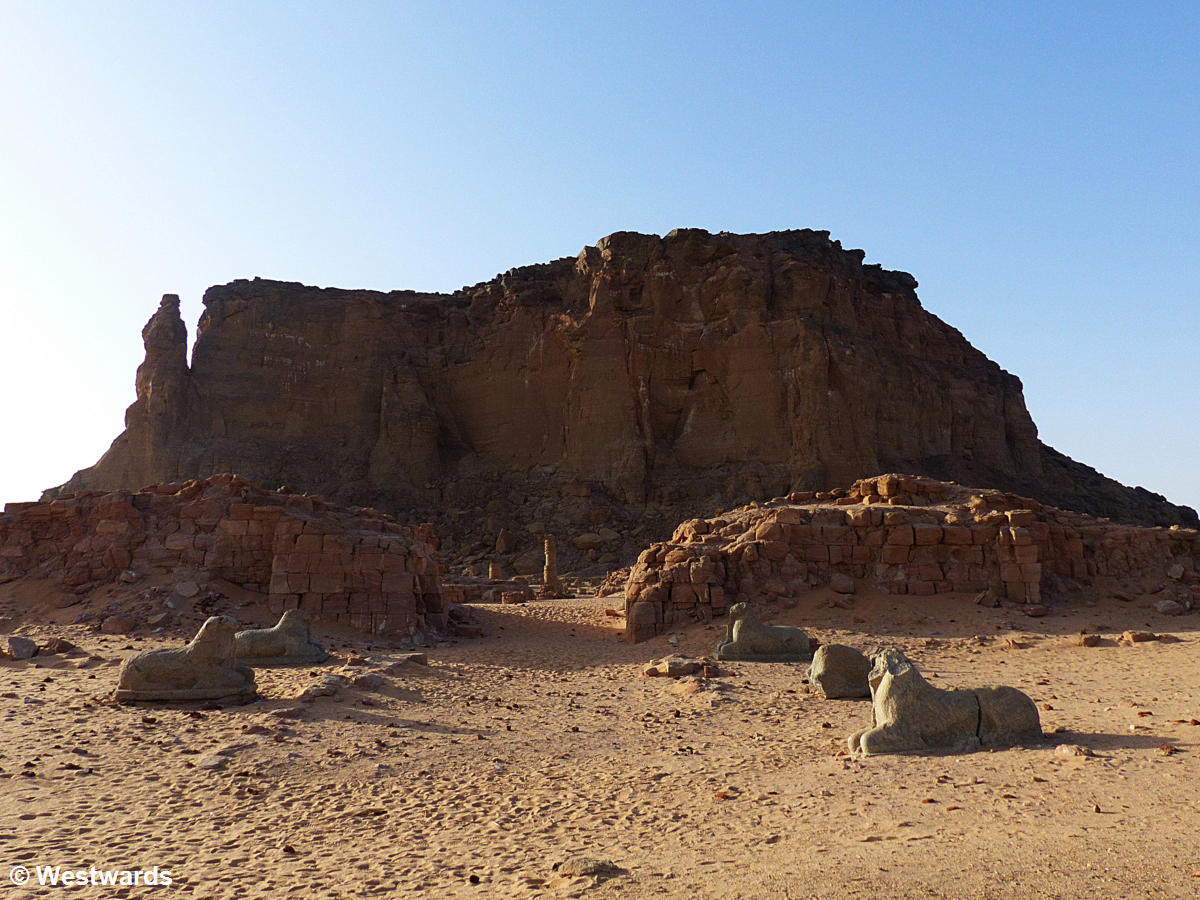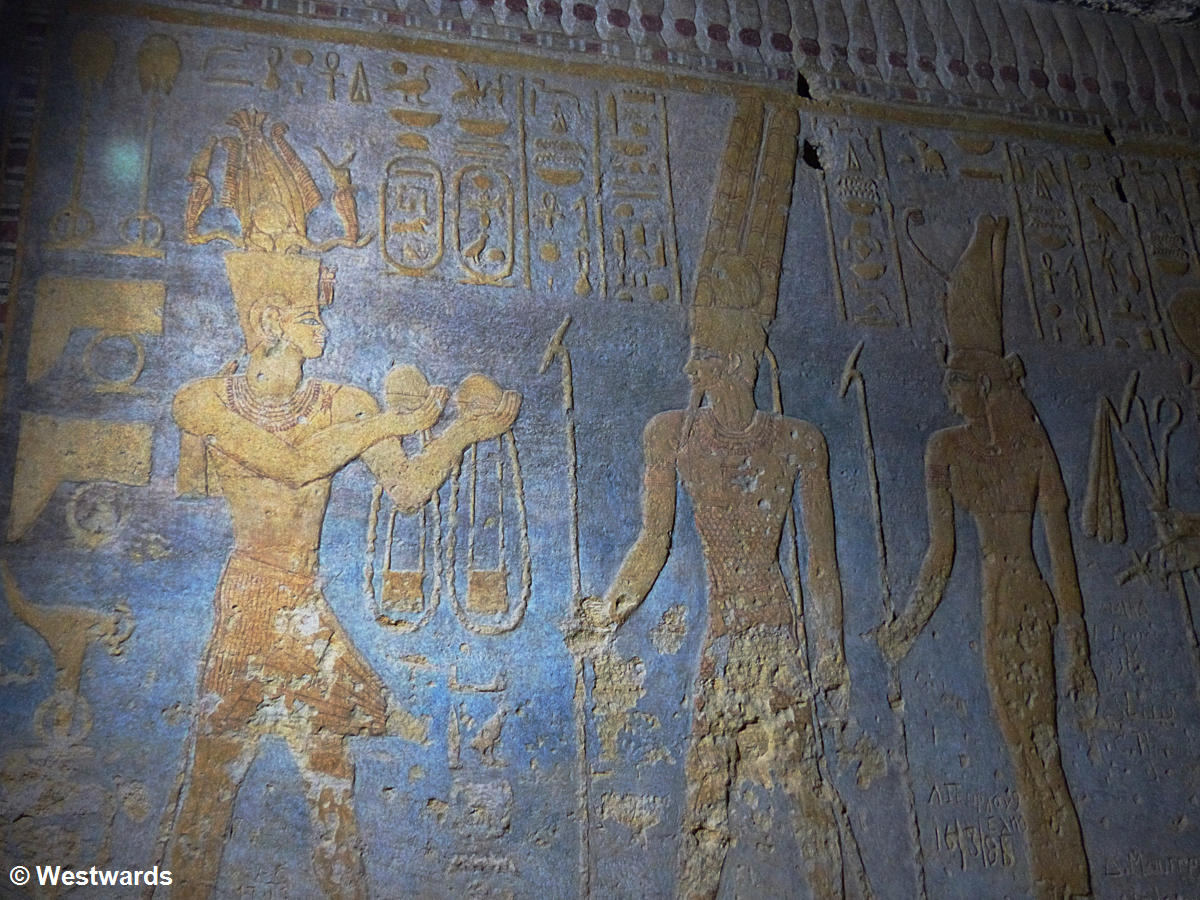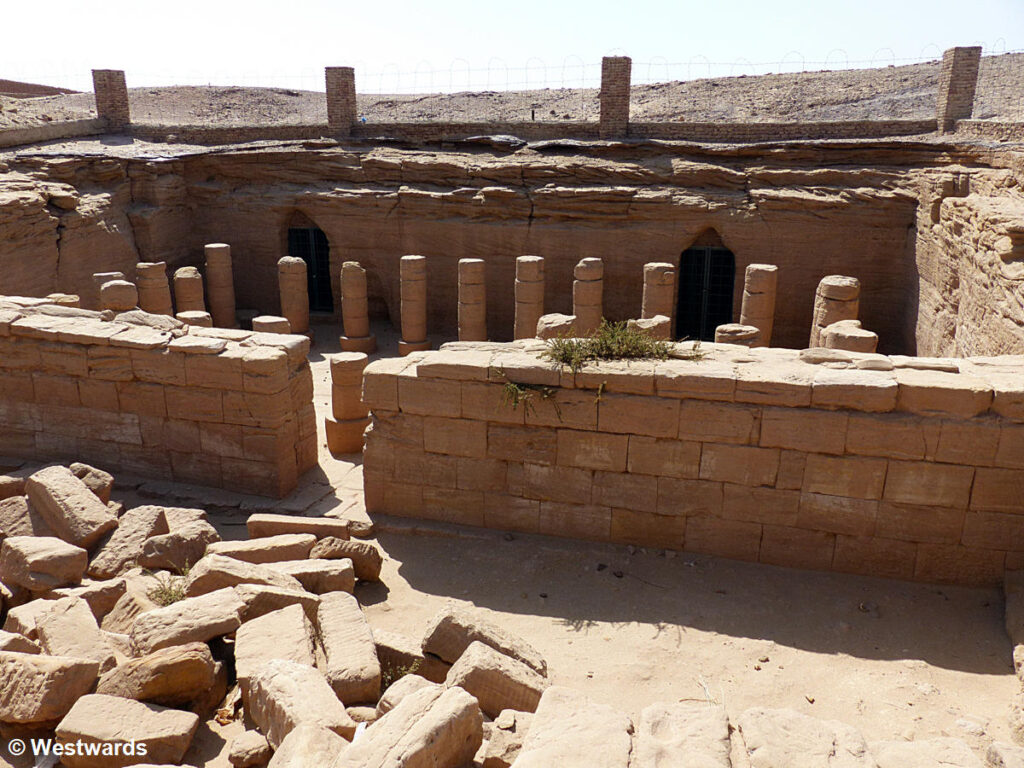
A hot desert wind is sweeping across the sand dunes as we walk towards the pyramids in Nuri in Northern Sudan. White animal bones and skulls are bleaching in the relentless sun, while in the distance someone is leading a group of camels. There are about 6 or 8 stone pyramids, smaller but still similar to the Old Kingdom Pyramids in Gizeh/ Egypt.
The largest of the pyramids is so eroded and weather-beaten that it might be mistaken for a very peculiarly-shaped hill; but it is the pyramid-tomb of Taharqa, the greatest Nubian king and Egyptian Pharaoh of the 25th Dynasty.
The Nubian kingdom of Kush
By the 8th century BC (when most Europeans were still hunter-gatherers …), the might of the Egyptian Kingdoms had waned and the Nile country had seen several divisions and foreign rules. On the upper reaches of the Nile, in today’s Sudan, the Nubian Kingdom of Kush grew stronger. And the Black African Nubians, who had once been colonised by Egypt and adopted the Egyptian gods, customs and civilisation, felt as the appropriate heirs to revive the Pharaonic Kingdom. Around 780 BC, they took on the title of Pharaoh and established a new dynasty of black Pharaohs. Taharqa’s father Piye invaded Middle and Lower Egypt, and Taharqa himself expanded the borders of the empire to its old size, residing in Memphis and Thebes in Egypt, as the Pharaohs of old had done.

The Amun Tempel at Jebel Barkal
Taharqa’s claim to power derived in part from the ancient Temple of Amun at Jebel Barkal, a mountain near Napata (today’s Karima). When we visit, only one other tourist is exploring the temple with his guide: Sudan has a rather limited tourist infrastructure compared to Pharaonic sites in Egypt (that will be a different story and blog post!).
There’s a warden to open and light up the cave temple of the goddess Mut, which was built by Taharqa and is covered in reliefs showing Nubian and Egyptian gods and kings. But he has to call someone from the town (who arrives on a motorbike 15 minutes later) to issue us a ticket.

The temple for Egypt’s greatest god, Amun, was established in the 15th century BC by the Pharaohs of the New Kingdom at the foot of a single-standing mountain and a strange, cobra-shaped rock. 800 years later, Taharqa expanded the temple to give legitimacy to his own claim to Pharaoh-hood. The remaining columns and pylons of the temple are still rather impressive, although their main attraction lies in the melancholy of the site, ruined and half covered by sand, with no barriers, fences, and visitor walkways as in Egypt. A new wall protected the wall paintings at the cave temple of Mut.

A burial place for the Kushite kings

The next day we visit the Royal cemetery of El Kurru, another site nearby where the Kushite kings were buried – among them Taharqa’s father Piye and his nephew Tanwetamani. Some tombs date from the 9th century BC, but from the time of Piye, the kings built pyramids over their graves hewn into the rock. Most of the pyramids have long disappeared as the villagers have been using the sandstone blocks for their own buildings, and thus, the entrances to the tomb chambers below are visible. Some of the tombs in El Kurru are decorated with hieroglyphic inscriptions and colourful decorations still intact. Recently, archaeologists have also uncovered a temple partly hewn into the rock.
Like all other Pharaonic sites, the cemetery lies just outside the green strip of fertile land along the Nile – and thus exactly where Sudanese villages are situated to this day. For until a few years ago (when the Meroe dam was built), this green strip was still inundated by the annual Nile flood for several months each summer, so all permanent structures had to be built above that level.
Jebel Barkal and the sites of the Napatan region (all situated around modern-day Kerima) have been inscribed as UNESCO World Heritage sites since 2003.
How to get to Jebal Barka, Nuri and El Kurru
To the sites of Jebel Barkal, it is a 2 km walk from the small town of Karima (through an unfriendly neighbourhood).
Both Nuri and El Kurru require a day if you are using public transport in spite of being only about 10 to 20 km from Karima – it’s half a day to visit, but in the afternoon there is even less public transport. Minibuses from Karima to El Kurru are only available in late morning, when the villagers return from the bigger market in Karima. After visiting the site we hitchhiked back to Karima.

For Nuri on the other side of the Nile you could also use a combination of minibuses, requiring a detour over the bridge at Meroe. We used an irregular passenger ferry (just a small motor boat) going from Karima to the river bank near Nuri. From there it would be possible to walk (around 9 km one way) or hire a tuktuk (which we did). Ask the boatman for his telephone number for the return way – he will come and pick you up.
Are Jebel Barkal, Nuri and El Kurru worth visiting?
Each of the three sites costs a whopping 10 USD entrance fee (rather high for what you actually see, and compared to similar sites in Egypt). So if you are really short on money or not so much interested in archaeology, you might prefer just visiting the small cluster of pyramids near Jebel Barkal (free). We also visited the more famous pyramids of Meroe, which cost 25 USD per person, and find that in comparison the pyramids at Nuri are more atmospheric and isolated. El Kurru is probably not worth the entrance fee for most people: there is only one tomb you can go into, otherwise there is not much to see at this site.





I did not know that Sudan has such unique archaeological sites. A trip to the Pharaonic sites of Jebel Barkal, Nuri, and El Kurru must have been an extraordinary adventure. But this is an expedition that requires a proper preparation. It’s great that you are giving directions on how to get there. The pyramids look impressive, even if they are smaller than the Egyptian ones. You could enjoy their beauty as they are less famous and less touristic.